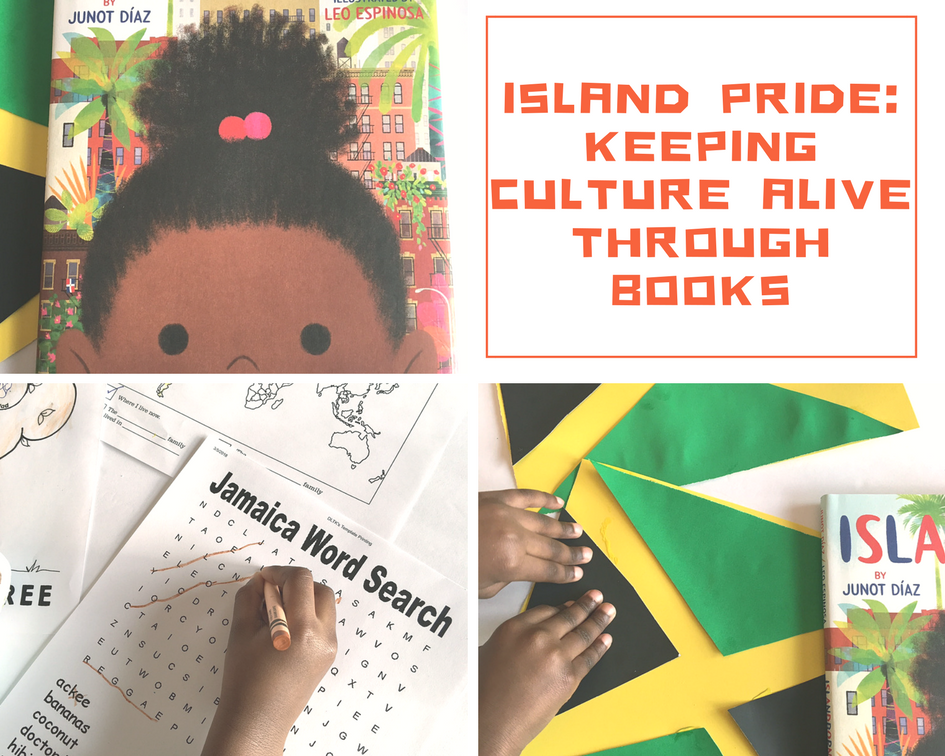Disclaimer: I partnered with the publisher and joined the Penguin Young Readers blog tour in exchange for an honest review. All opinions expressed are my own.
Islandborn by Junot Diaz, illustrated by Leo Espinosa
Understanding who we are is maybe one of life’s biggest questions. Knowing where we came from is extremely important. It impacts who we are, how we think, what we believe, how we interact with others, what we think is possible for ourselves, whether we view the world as good or bad, what we strive for. Our history—our upbringing—impacts everything we think, believe and do.
Keeping your culture (or native language) alive at home will reinforce in your children a sense of identity and will build their self-esteem. Children benefit from learning to value their roots and their culture. Children must be taught that we are all different and that differences must not only be accepted but also celebrated and that their culture (and language) is something they have to take pride in.
One way of helping children appreciate diversity is to teach them about different cultures through books. It’s important for children to learn each culture is unique but equally important and valuable. Respecting others begins by respecting ourselves and our heritage.
When I first learned about Junot Diaz’s children’s book I was estatic! Even though I wasn’t born on an island (I was born in the US), my mother was born in Jamaica and so was my husband and his family. Therefore, we take pride in celebrating our Jamaican culture.
In the book Islandborn, a little girl named Lola longs to remember the island where she was born for her school homework assignment. Thankfully, with the help of family and friends Lola’s imagination takes her on a journey back to the island. As she talks to different people, Lola uses her sketchbook to write down simple phrases to help her remember. Finally in the end, Lola goes home and draws pictures of everything she wrote down and creates a gorgeous book for her class assignment.
The book never explicitly states which island Lola is from, but I assume it’s the Dominican Republic where Junot Diaz emigrated from based on a magnet placed on the refrigerator in one of the illustrations. There is also mention of a “monster” that fell upon the island for thirty years which is likely a metaphor for Dominican dictator Rafael Trujillo.
Although I think the text is quite wordy for a picture book aimed at readers ages 5-8, I liked this book for several different reasons:
- The thing that stood out the most to me is there are no White characters featured in this book. You will also see a variety of diverse character names like: Mai, India, Camila, Matteo, Nu, Leticia, Dalia, etc.
- Each page is frame worthy – the illustrations are bursting with bright, beautiful colors
- The overall messages of understanding and appreciating where you came from and your family history rings loud and clear
- It challenges children to use their imagination
- By Lola understanding her past, it will no doubt give her future wisdom-filled direction
After reading Islandborn, the kids completed a Jamaican word search puzzle, colored a family tree picture and we made Jamaican flags using construction paper. A fun way to reflect on the story, our family history and explore the island of Jamaica.
Reading this book may help remind little readers of who they are, what motivates them, and what their purpose is. It reminded me of that little kid I was—the one who dreamed big, feared little, and enjoyed the simple things in life. Islandborn reminds me of what really matters: family, building great friendships and relationships, and taking pride in your heritage and culture.
Your turn: How do you teach your kids to keep their culture alive and take pride in where they came from? Feel free to share in the comments.


I love this sight! I am the art director at a Florida Boys & Girls Club and found my kids were not interested in reading. I checked out all the books in the club. There was nothing that theses kids could relate to. The images, the story lines nothing culturally relevant. I decided to write a series called Ms. Ellen’s Got Swag. I now have 3 books done. “Don’t Touch My Shoe’s Bruh,” “Glitter Girl” and out in March “Goldilocks Wears a Weave”. I would love to somehow be involved in hereweeread. You can check out my books on Amazon
It is really article. Thanks for sharing such a good article. Keep writing.
admissioninbangalore.in/engineering-bangalore-admission/
Nice article.Keep writing this kind of article.
https://admissioninbangalore.in/bms-college-aerospace-engineering/
This is really great article. Thanks for sharing such a nice article. Keep sharing this kind of article.
This is really great article. Thanks for sharing such a great article.
Thanks for sharing such a great article. Keep writing this kind of article.